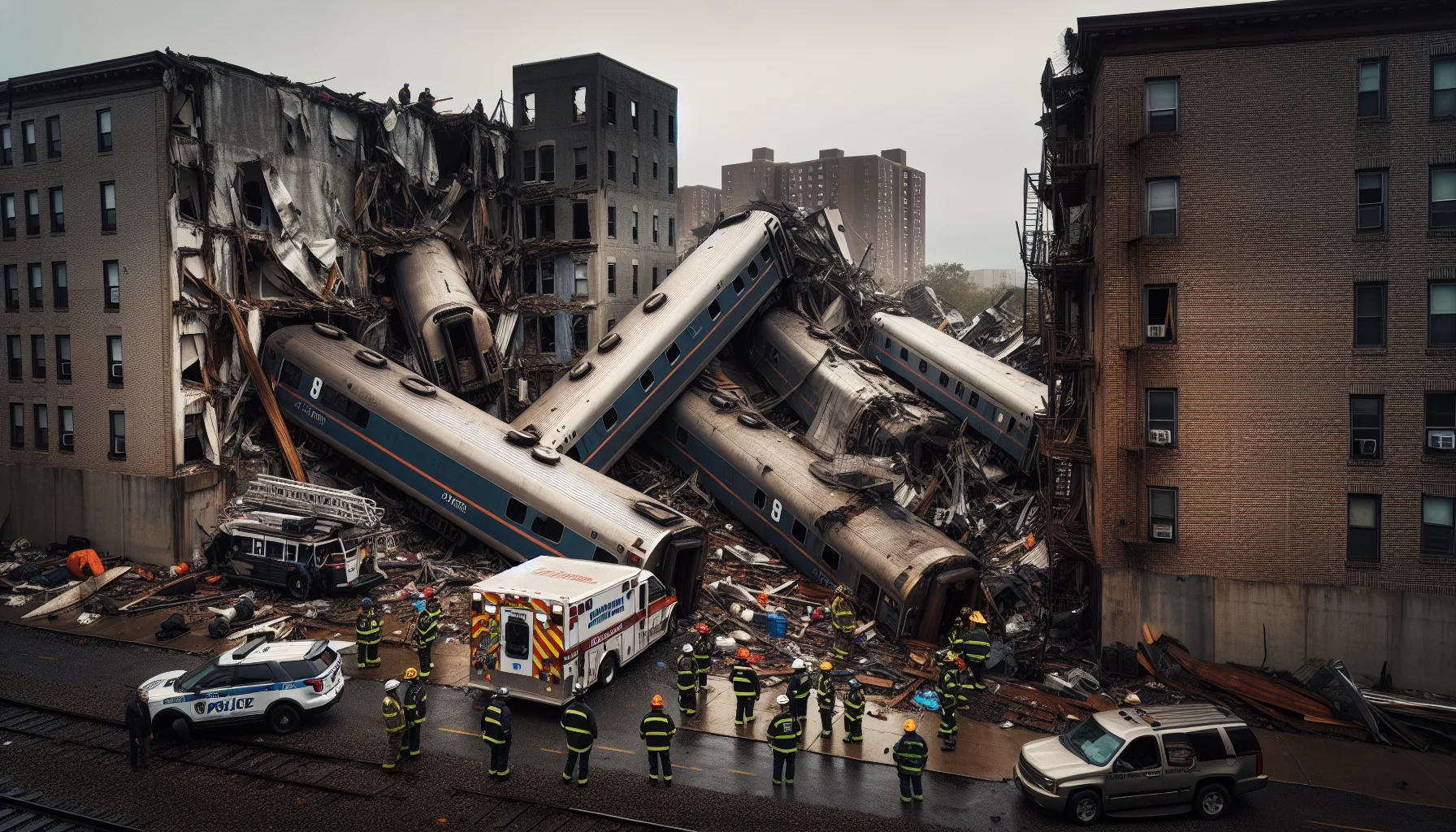
The Amagasaki Rail Crash
by: The Calamity Calendar Team
April 25, 2005
In the Blink of an Eye
April 25, 2005, began like any other day for most commuters on Japan's Fukuchiyama Line. It was a routine weekday morning, people settling into their train seats, perhaps exhausted already by the hustle of modern existence, or quietly anticipating the day's challenges. But on that fateful morning, an invisible tension laced the air, one that would soon manifest itself in earth-shaking catastrophe. By the end of it all, the events of that day would forever change the landscape of Japanese rail safety.
A Fatal Race Against Time
The train that would enter the annals of history was a seven-car commuter service run by West Japan Railway Company, known as JR West. On board was 23-year-old Ryujiro Takami, a relatively green driver under mounting pressure — 80 seconds behind schedule at the onset of the journey. Takami’s task seemed simple: make up for lost time and deliver passengers punctually. Yet, beneath this seemingly straightforward demand lurked a more perilous expectation — a systemic emphasis on timeliness, perpetuated by JR West's unyielding punctuality standards.
As the train departed Tsukaguchi Station around 9:27 AM, minutes became more than just measurements of time. They metamorphosed into a pressure cooker for Takami, whose youthful inexperience collided head-on with an oppressive drive to rectify an 80-second delay.
Chaos Unleashed
Within those critical moments, a series of decisions would lead to disaster. Just after 9:18 AM, the train, now barreling down the tracks, reached an unintended speed of 116 km/h as it approached a curve near Amagasaki, where the speed limit was a far safer 70 km/h.
The world seemed to hold its breath as steel screamed against steel, and the precarious balance of physics and machinery faltered. At 9:19 AM, the first five carriages careened off the tracks. The lead carriage, propelled by momentum and miscalculation, crashed into the ground-floor parking garage of a nearby apartment building. What followed was pure devastation: derailed carriages crushing into twisted metal and debris, the acrid tang of smoke hanging heavy in the air.
Wresting Order from Chaos
The scale of destruction was immediately apparent. Rescue operations were swift yet harrowing. Emergency services — firefighters, police, medics — descended upon the scene with urgency. However, the colossal wreckage and grim magnitude of the crash posed daunting challenges. Japanese society, known for its efficiency and stoicism, watched in stunned horror as rescue teams worked tirelessly, confronting both chaos and human tragedy.
Thanks for subscribing!
The Amagasaki Rail Crash claimed the lives of 107 individuals, including the young driver, Takami. More than 560 others were injured, many severely. Survivors spoke of confusion and terror: a morning that began with familiar normalcy ended in heartbreak and disbelief.
A Reckoning for JR West
In the days and weeks that followed, the public's attention turned to JR West. Accusations of negligence and misplaced priorities filled conversations and headlines. In an environment where trains were known for impeccable punctuality, questions arose about the human cost behind such discipline.
A company already facing scrutiny for its practices now stood center stage, confronted by a necessity to reevaluate its values. Internationally recognized for its technological advancements and efficiency, Japan’s rail industry was faced with a stark reminder: Safety, not speed, should preside over all else.
In response to outrage and criticism, JR West initiated a sweeping overhaul. Gone was the simplistic ideology that time was paramount. Operational safety now took precedence. Automatic train control systems were installed as robust safety nets against human error, and driver training programs received imperative overhauls.
Lessons Learned and Unlearned
In the years since, the tourism legacy of the Amagasaki Rail Crash reveals a heavier truth: sometimes it takes great loss to inspire meaningful change. With investigators highlighting systemic inadequacies and prioritization failures, the focus shifted towards a balanced approach to rail operation safety.
Yet, despite the reforms, the ghosts of Amagasaki loom as somber reminders. They signal not just the physical and emotional consequences of April 25, 2005, but an unending call to vigilance and thoughtful progress.
The tragedy of Amagasaki remains a stark narrative of caution and introspection. In the spaces once marred by wreckage, the whisper of past errors demands remembrance — a quiet testament to the enduring connection between humanity's flawed nature and its resolve to learn and heal.
Stay in the Loop!
Become a Calamity Insider and get exclusive Calamity Calendar updates delivered straight to your inbox.
Thanks! You're now subscribed.